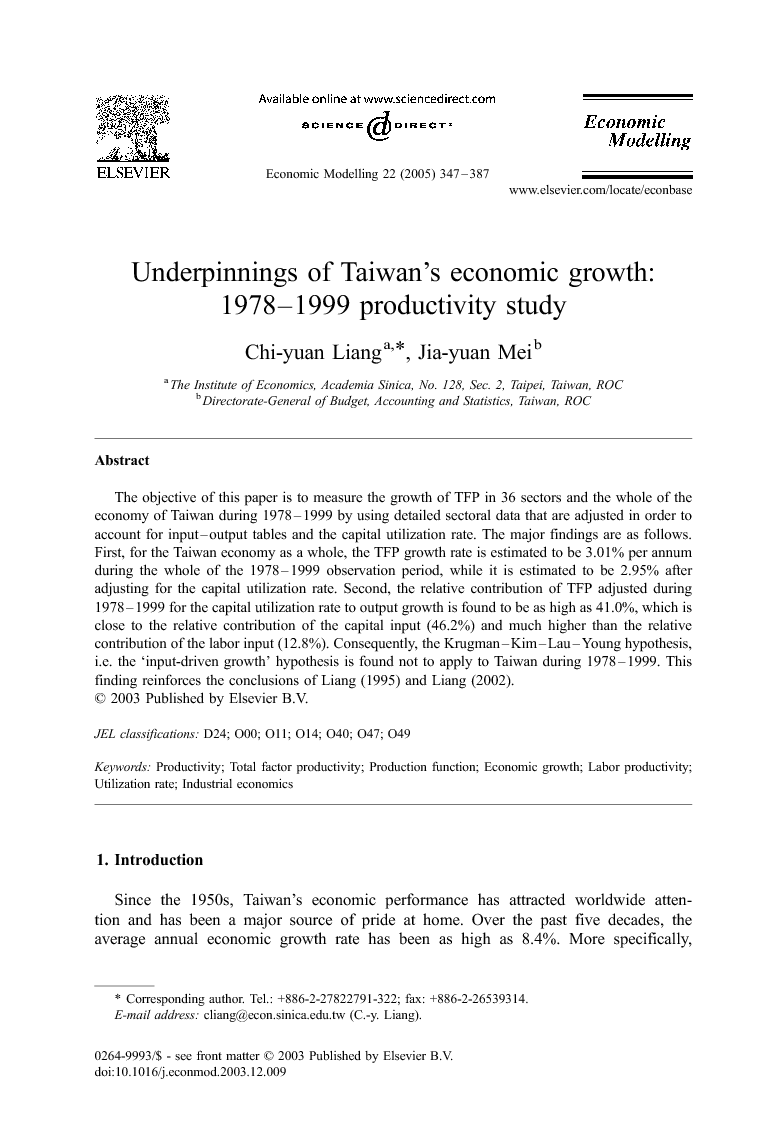ترجمه فارسی عنوان مقاله
زمینه های رشد اقتصادی تایوان: مطالعه بهره وری 1978-1999
عنوان انگلیسی
Underpinnings of Taiwan's economic growth: 1978–1999 productivity study
| کد مقاله | سال انتشار | تعداد صفحات مقاله انگلیسی |
|---|---|---|
| 11690 | 2005 | 41 صفحه PDF |
منبع

Publisher : Elsevier - Science Direct (الزویر - ساینس دایرکت)
Journal : Economic Modelling, Volume 22, Issue 2, March 2005, Pages 347–387
ترجمه کلمات کلیدی
-
بهره وری کل عوامل - تابع تولید - رشد اقتصادی - بهره وری نیروی کار - نرخ بهره - اقتصاد صنعتی
کلمات کلیدی انگلیسی
Productivity,Total factor productivity,Production function,Economic growth,Labor productivity,
Utilization rate,Industrial economics

